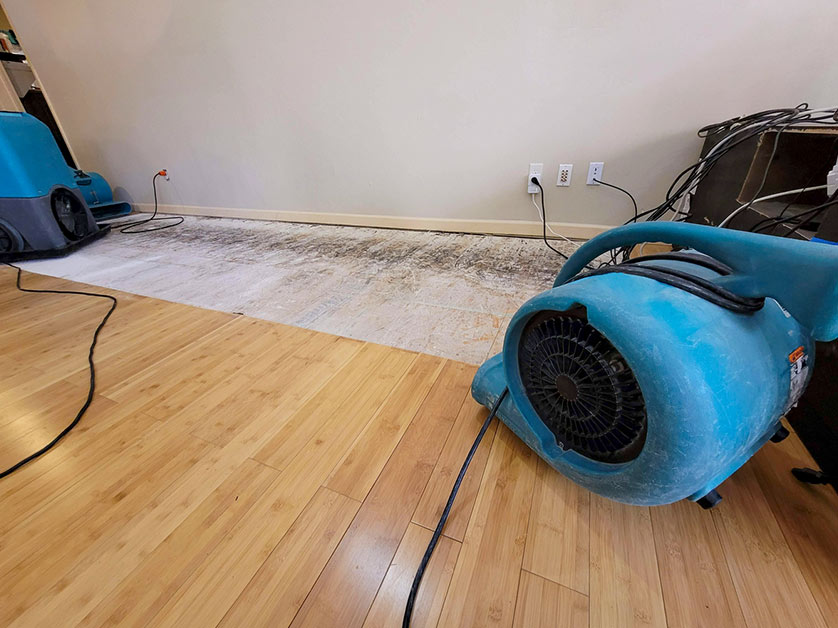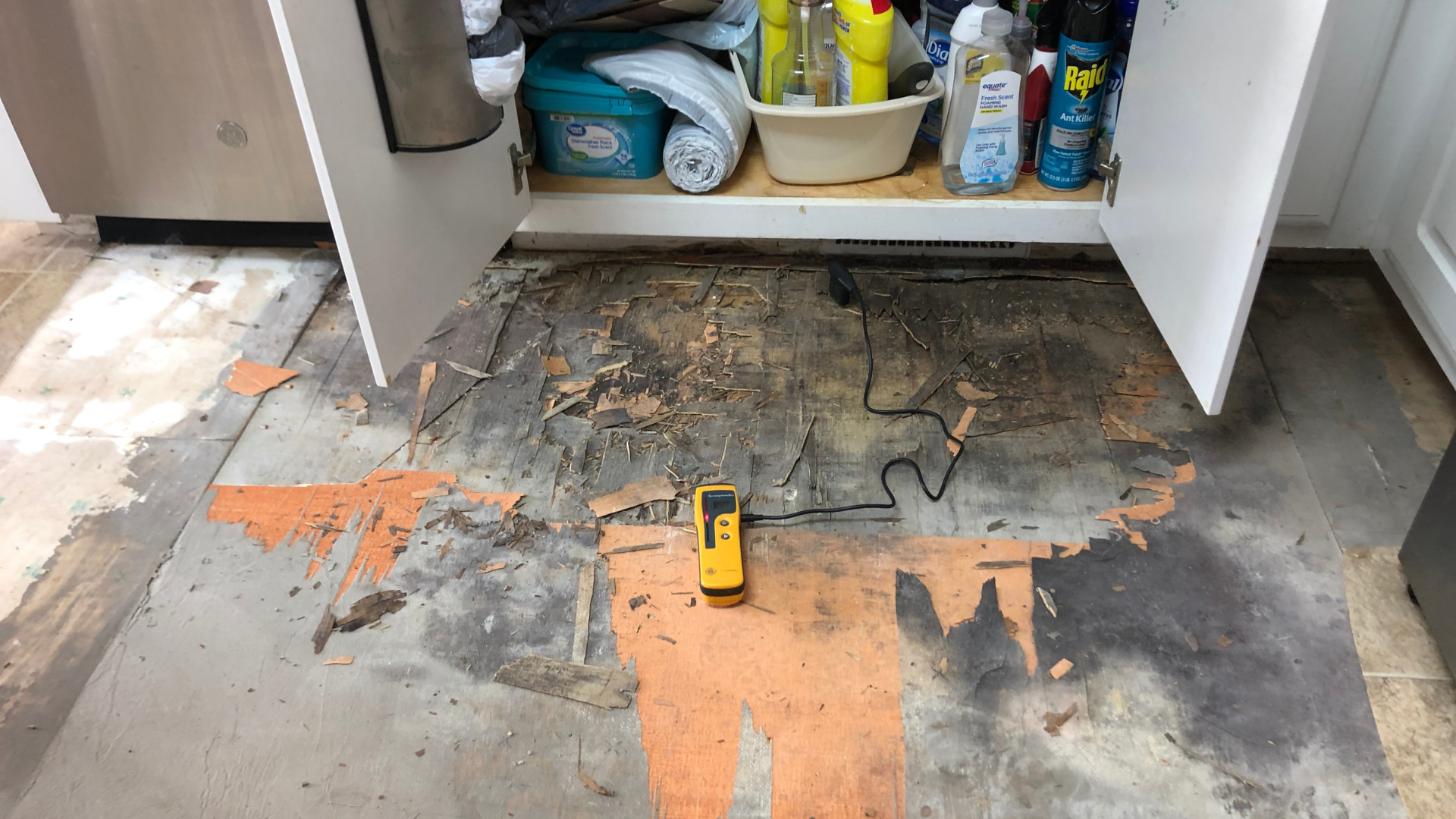Water Damage Restoration 101: Recognizing the Process and Price
Water damage can strike suddenly, leaving home owners in a state of complication. Comprehending the remediation process is crucial for efficient recovery. From examining the damage to selecting the appropriate company, each action affects the total outcome and expense. Factors such as the type of water damage and necessity also play a significant role. What are the details strategies utilized in repair, and just how can one get ready for possible costs?
Sorts Of Water Damage

First Assessment and Examination

Water Removal Methods
Complying with the preliminary evaluation, efficient water extraction strategies are utilized to alleviate damage and avoid further concerns. These techniques entail the use of specialized equipment such as submersible pumps and industrial-grade vacuum cleaners - Mold Remediation After Water Damage. The selection of approach relies on the volume of water present and the type of products influenced. For standing water, completely submersible pumps are generally made use of for fast removal, while vacuum cleaners are excellent for drawing out water from carpets and furniture. Additionally, advanced approaches like water removal mats might be utilized for hard-to-reach locations - Flood Cleanup Services. The objective is to get rid of as much water as possible, decreasing the potential for mold growth and architectural damage. Trigger and reliable water removal is crucial in the general water damage restoration procedure
Drying and Dehumidification Process
Once the water removal is complete, the drying out and dehumidification procedure ends up being crucial to restoring the damaged area. This stage generally uses industrial-grade dehumidifiers and air movers to properly decrease moisture degrees. The dehumidifiers draw in wet air, removing excess moisture, while air moving companies flow air to speed up dissipation. Tracking tools is often utilized to track humidity and temperature degrees, making certain excellent drying out conditions. The period of this procedure can vary depending upon the level of the water damage and ecological aspects. It is necessary to thoroughly dry all impacted products, consisting of wall surfaces, floor covering, and home furnishings, to stop mold and mildew growth and architectural damage. Appropriate implementation of this action is essential for an effective reconstruction outcome.
Cleaning Up and Sterilizing Afflicted Locations
As soon as the drying process is complete, a complete first analysis and inspection of influenced areas is important to identify contamination degrees. Efficient cleaning strategies and ideal items need to after that be used to get rid of debris and spots. Finally, sanitization and disinfection methods are important to ensure that damaging pathogens are gotten rid of, bring back the space to a secure problem
Initial Assessment and Examination
Before beginning any kind of repair efforts, a comprehensive initial analysis and assessment of the affected areas are crucial for reliable cleansing and disinfecting. This process involves identifying the extent of water damage, establishing the resource of the water breach, and reviewing the materials influenced. Examiners generally look for indicators of mold and mildew growth, architectural integrity problems, and harmed items. The evaluation likewise consists of inspecting wetness degrees making use of customized tools to assure no hidden water pockets remain, as these can lead to further problems. Documenting the findings is essential for planning the next steps in the restoration process. A detailed initial analysis makes it possible for restoration experts to create a targeted method for efficient cleansing and disinfecting, ultimately decreasing damage and health risks.
Cleaning Up Methods and Products
Reliable cleansing and sanitizing of water-damaged locations require a variety of items and strategies tailored to the certain materials influenced. For permeable surface areas like drywall and carpets, removal approaches are important to remove excess wetness, followed by deep cleaning with specialized cleaning agents. Non-porous materials such as floor tile or metal can be cleaned using commercial-grade cleaners that successfully get rid of contaminants. Steam cleaning is another efficient method, particularly for carpets and upholstery, as it utilizes heats to get rid of germs and mold (Water Damage Restoration). Additionally, environmentally friendly products are increasingly popular for their safety and security and efficiency - Water Damage Restoration. Ultimately, picking the proper cleansing techniques and items not only assures instant cleanliness yet likewise aids in protecting against more damage and health and wellness dangers connected with water intrusion
Sanitization and Disinfection Techniques
When addressing water damage, correct sanitization and disinfection approaches are important to ensure the security and health of the damaged atmosphere. After initial cleansing, surfaces have to be treated with proper disinfectants to get rid of pathogens, mold and mildew, and bacteria that grow in damp problems. Common approaches consist of the usage of EPA-approved chemical disinfectants, which can be used through splashing or wiping strategies. Furthermore, ultraviolet (UV) light systems can successfully sanitize areas by neutralizing microorganisms without extreme chemicals. The choice of technique often depends upon the sort of materials influenced and the extent of contamination. Ultimately, thorough sanitization not only brings back a safe living area however likewise aids prevent future health and wellness threats connected with sticking around dampness and mold development.

Fixings and Restoration Options
Assessing the damage created by water direct exposure is important for determining the suitable repair services and repair choices. House owners might encounter numerous concerns, consisting of harmed drywall, deformed floor covering, and compromised structural aspects. Relying on the level of the damage, repair work might entail changing areas of drywall, mounting brand-new flooring, or strengthening architectural light beams. In cases of severe damage, complete replacement of affected materials may be needed. In addition, expert conservators usually recommend using wetness meters to examine concealed wetness levels before making a decision on the very best strategy. It is very important to act promptly to prevent mold growth and more deterioration. Choosing the appropriate choices not only recovers the residential property yet likewise ensures long-term safety and capability.
Variables Affecting Restoration Prices

The level of water damage directly impacts the remediation costs home owners can expect to sustain. Elements such as the resource of the water, the duration of direct exposure, and the affected materials considerably affect prices. For example, clean water damage from a broken pipe is generally less pricey to restore contrasted to damage triggered by sewage. In addition, the degree of contamination dictates the requirement for specialized cleansing and disposal solutions, further boosting expenses. Geographical area likewise plays a duty, as regional labor rates and accessibility of reconstruction solutions can differ. Ultimately, the urgency of Water Extraction And Drying the action influences costs; quicker interventions typically result in reduce general costs by stopping additional damage. Comprehending these factors is vital for property owners when estimating repair prices.
The three main types of water damage are classified based on contamination levels: clean water, grey water, and black water. A thorough preliminary evaluation and assessment are crucial actions in the water damage repair procedure. For standing water, submersible pumps are usually used for fast removal, while vacuum cleaners are perfect for removing water from rugs and upholstery. The level of water damage directly influences the repair costs home owners can anticipate to incur. Tidy water damage from a busted pipe is normally less expensive to restore contrasted to damage triggered by sewage.